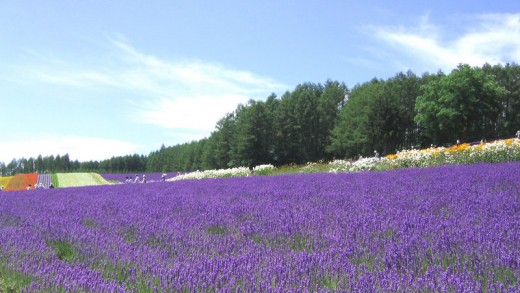Lavender, a Natural Sleep Enhancer and so Much More Besides

Lavender- a brief history
If you've ever driven past fields of cultivated lavender, as I have, both here close to the South Downs of England, and also in the sunny southern fields of France, then you'll know how beautiful and pleasing it can be. The pale purple flowers gently rustling in the summer breeze, the air alive with the gentle buzz of bees, and the dancing flight of butterflies.
The word Lavender comes from the Latin word Lavare - to wash- but it has been used throughout recorded history. In 1923 when Tutenkahamun's tomb was opened 3,000 years after it was first sealed, traces of lavender were found that still retained a slight scent.
The Romans are credited with bringing lavender to Britain. They loved to bathe in lavender scented water. The soothing perfume calms and relaxes and has long been used to aid restful sleep. Roman bath-houses were noisy, communal affairs where people came together to chat and laugh as they soaked away the stresses and strains of the day. I expect the scent of lavender was a welcome addition!
In folk-lore, lavender came to be associated with purity and fidelity. A popular test was to put a sprig of lavender into a girl's left hand. If the flowers didn't shrivel, then she was declared to be chaste. Similarly, lavender placed in a man's right shoe was thought to guarantee his faithfulness, and sailors' wives would bake cakes with lavender in them to ensure their husbands fidelity during the long months away at sea. Bunches of lavender were often woven into the shape of a cross to ward off evil spirits, and these would be hung over doorways.
The Victorians were big fans of lavender, and even to this day, many people still associate it with lace and old ladies, which maybe why it fell out of favour to some extent, in the twentieth century.
Lavender in the 21st century
These days lavender is enjoying a real revival in popularity. Modern technology has come together with traditional ideas and techniques, and a wide range of quality lavender based products are now available. Here are just some of the ways this old-fashioned treasure is being given a new twist:
- Lavender oil is available as a pillow spray. The scent of Lavender has a big reputation as a relaxant and sleep enhancer, so I guess a lavender-scented pillow is a good place to start.
- Horse and dog washes scented with lavender are good for calming animals, and also offer some resistance to flies, fleas and ticks
- Lavender scented shampoo, soap, talc, and bath products. These are all traditional uses, but brought right up to date with the addition of such modern ideas as bath bombs, and flower heads included in the soaps and salts.
- Lavender bags - great for scenting drawers and closets. Lavender is a traditional moth and insect repellant as well as having a pleasant scent
- Lavender Essence - the natural antiseptic and healing properties make this a winner when dabbed on insect bites, stings, cuts, spots and bruises
- Lavender as a cooking ingredient. The fresh flowers can be crushed and in cluded in cakes, or used to decorate icing and other toppings.
- Lavender and wheat heat pads - these useful bags can be bought or made at home, then heated in the micro-wave to place on aching joints and muscles
- Lavender pot-pourri - scent your room with this pleasing selection of dried, aromatic flower buds
- Lavender massage oil - soothing and calming. A great way to relax those muscles
- Lavender scented candles - wind down for bed-time with this subtly perfumed product



Growing lavender in your garden
Species and Varieties
There are more than 50 species of lavender, and they come in a variety of sizes and the colours vary through pink to purple. The great thing is that they are a good plant for neglectful gardeners like me, as they will tolerate minimal attention quite well. They are also quite a neat, well-behaved plant, and always a pleasure to cultivate. Here are some of the better known varieties:
English Lavender (Lavandula.angustifolia)
This type grows to a height of around 45cm to 75cm (1½ft to 2½ft) with a similar spread. Over time these lavenders form mounds which looks very attractive when groups are planted together. The flowers appear in late Spring and keep coming right through to late summer. .
Lavandin or Dutch Lavender (Lavandula.x intermedia)
The stems of Lavandins are longer than English Lavender. They have a height and spread of about 90cm (3ft), which makes them useful as low hedging.
Lavandula.dentata
These lavenders are half hardy. The distinctive leaves have deep "teeth" up their entire length, which accounts for their Latin name. The flowers have an unusual shape and long stems, which can appear straggly in a smaller garden.








